Like most new mums I had an endless supply of nappies I’d purchased from babynest-online.dk/pusletaske/. Hundreds of the things which were either stored away in cupboards ready to be used or clogging up the bin. I will admit that it never really crossed my mind to look at cloth alternatives. Yes, I thought all the patterns out there were super cute but I was a Pampers girl. It seems the rest of the team were the same so when reader, Cecily, got in touch to share her experience of cloth nappies I jumped at the chance. Just because the team haven’t used them doesn’t mean we can’t see the benefits and we are all about sharing all the options with you. So I’ll hand over to Cecily to tell you all.
I knew from early in my pregnancy (and possibly even before that..!) that I wanted to use cloth nappies for two main reasons. First because I struggled to get my head around the environmental impact of using disposables and second because I felt that cloth would be a gentler option for my baby’s skin. Luckily when I broached the subject with my husband, he didn’t need persuading. Our decision to use cloth nappies definitely led to some raised eyebrows among our friends and family. We heard horror stories about nappy rash and exclamations about the amount of work we would create for ourselves. Thankfully, I’m quite (very?) stubborn and was confident in our decision, so we ploughed on ahead anyway and I’m so glad that we did. We’re now the proud parents of a cloth-bummed 4 month old, so I thought it might be helpful to share our experiences so far. People seem to be put off cloth nappies for a number of reasons. There’s a perception that it’s enormously complicated and a lot of work. Then there’s a wealth of information out there on the internet and this can be overwhelming. I hope that, rather than adding to the ‘noise, I can show that this doesn’t have to be the case!
The Basics – Picking a Cloth Nappy
If you were ask your parents about cloth, they will probably tell you about terry towels and complicated folding and nappy pins. These are still an option, but they are by no means the only one. We actually have a stack of old terries that my parents used for me(!) but I never got the hang of the folding and so I mostly use them to protect the floor when we do a bit of nappy free time. When I first started looking at what was out there, I found the choice pretty overwhelming and the jargon is insanely confusing – pockets, all-in-ones, liners, inserts, all-in-twos, wraps… I suspect it’s enough to send a lot of confused parents running for the disposable nappy aisle at the supermarket. So, the first thing I’d say is to try not to get too hung up on it all. A cloth nappy basically has three parts – the outer part which is waterproof and keeps everything contained, the absorbent bit in the middle and a liner on the inside which helps to wick moisture away from the skin and contain any poo. These three elements can come combined in all sorts of ways depending on the brand and the style of the nappy. An all-in-one nappy is a bit like a washable disposable nappy, whereas other styles have the three elements separately, or in various combinations. There are pros and cons to different styles such as ease of use, drying time, containment, ability to make more or less absorbent and so on.
I started out by looking online at what was out there and then I filled out the questionnaire on the Nappy Lady’s site. I’d highly recommend doing this as it’s a great way to get a personalised recommendation as a starting point. As we’re currently living overseas where there’s not such a great choice available, we ended up buying the nappies while I was pregnant and on a trip home to the UK. The style we chose is a cotton shaped nappy with a separate waterproof wrap and fits a baby until around 9 months. We got just enough to get by with washing every day. Once the baby arrived and we started using them full time, we were pretty happy with our choice with only one exception – they are quite bulky. It hadn’t occurred to me that this would be a thing. Often it really doesn’t matter, but it can be a bit of a pain under some clothes. As we hadn’t bought loads, we then got a visiting friend to bring us out a few more in a different style which are more slimline and are designed as a one-size-fits-all. With hindsight, and if we had been living somewhere with a better choice of styles, I wouldn’t have worried so much about getting a full set in one brand and style. As we get closer to outgrowing the sized ones in our stash, we’ll most likely end up with a few more different styles.
Using Cloth Day-to-Day
When my husband and I discussed using cloth, we agreed that we wouldn’t rule out using disposables sometimes. I was keen to keep our disposable use to a minimum though and so although we went to the hospital with a pack of newborn nappies, I’d also packed quite a few cloth ones too. As it turned out, our baby girl was a tiny 5lb 13oz and the cloth nappies swamped her, so we ended up using mostly disposables for the first few weeks and slowly weaned ourselves on to cloth full time. I did try using folded muslins or terries a few times in the early days, but I really struggled with getting a good fit (clearly origami is not my thing!) and nobody wants a leaky nappy. Lots of people swear by these for newborns though. We do still use disposables now and then. We usually have a small pack on hand just in case and we use them when travelling so we don’t arrive somewhere with a load of dirty nappies, or when we’re staying somewhere without washing facilities.
I’ve found that quite a lot of people are really curious about how using cloth actually works. Again, I don’t think it’s very complicated or really that much extra work. We don’t have a huge stash of nappies so we usually wash them every day. Next to our bathroom sink we keep a plastic bowl and a bucket with a mesh bag inside. Each time we do a nappy change, we give it a quick rinse, wring it out and put it in the bucket. For a poo, the liner catches the worst of it, so we rinse it out in a plastic bowl and empty the water down the loo and again, we put the wrung out nappy and liner in the bucket. As our baby hasn’t started solids yet, it’s pretty inoffensive, but you can also get disposable liners if you prefer. It really only takes about an extra minute at nappy changes at the most. When we’re out and about, we have a waterproof nappy bag to put the dirty nappies in and we deal with them when we get home. Every morning, we empty the bucket into the washing machine and run it and either line dry or tumble dry the nappies. If there’s any staining, hanging them outside works wonders – the sun acts as a natural bleach, even on a cloudy day!
There has been one other unexpected benefit of using cloth for us – we’ve had almost no poosplosions. Maybe we’ve lucked out with a non-explosive baby, but it seems that our nappies are pretty bomb-proof!
One other thing I should mention is that we also use washable wipes. We bought a kit from Cheeky Wipes and it’s quite possibly our best pre-baby purchase. The kit makes it super easy to use the wipes at home or out and about, and I love knowing exactly what we’re using on our baby’s skin. They’re really effective too – we rarely need more than one wipe for a nappy change. Even if you decide to use disposable nappies, I’d highly recommend them.
I’m definitely no expert, but if you’re thinking about cloth, I’d highly recommend it. I’d say don’t be afraid to start gradually. Pick a style you want to try and get one or two to begin with. You can increase your stash as you go. It’s better to use some disposables at first while you work out what works for you, rather than buying a full set and then finding out they’re not quite right. There is a big preloved market for cloth nappies too, so that’s an option if you want to keep costs down and reassuring to know if you end up with something that doesn’t work for you. There are also cloth nappy libraries where you can rent out different styles to try.
I hope that’s helped to demystify cloth nappies, rather than add to the confusion. Feel free to ask my any questions in the comments below and I’ll be happy to try and help out!
Image by Little Beanies.


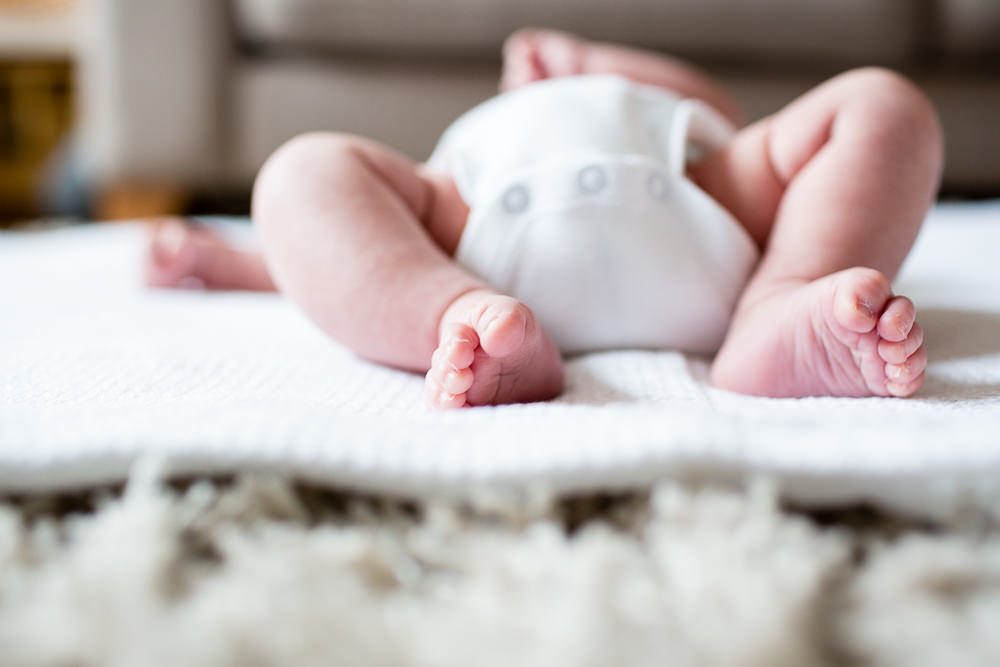
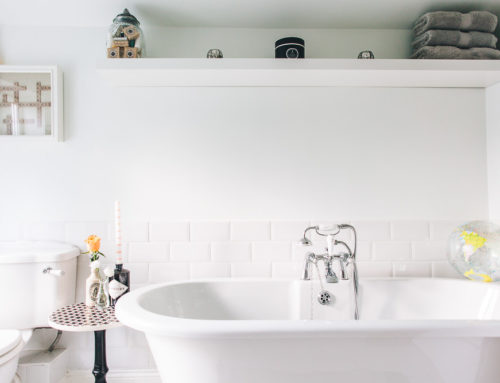
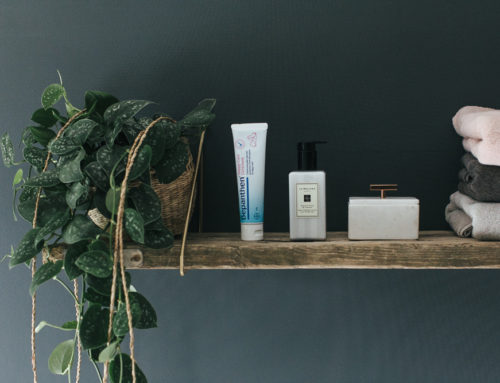
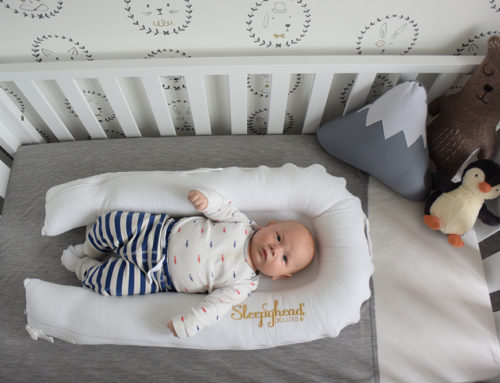
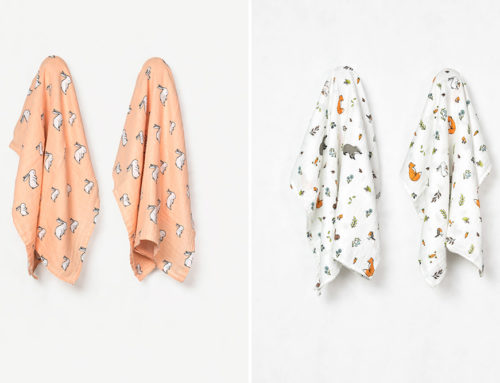
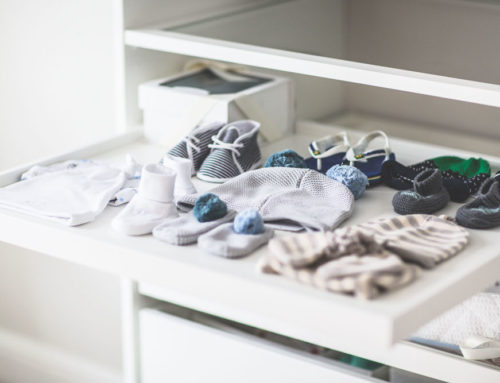

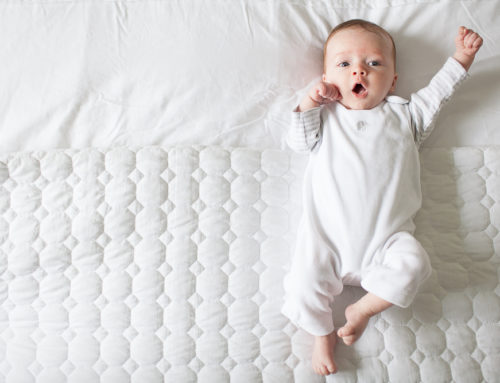
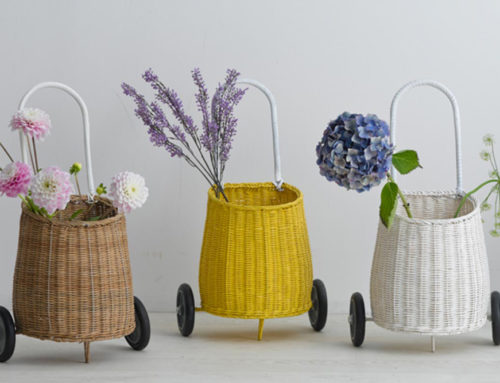
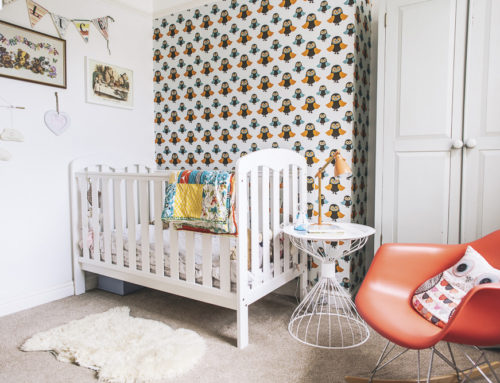
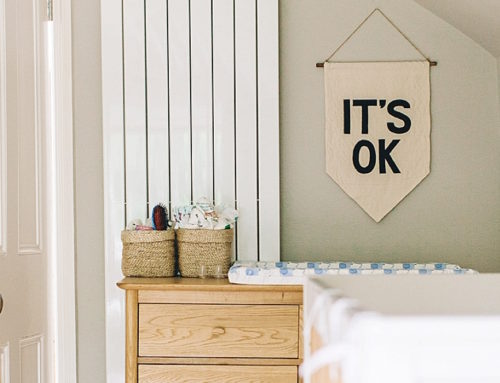
Ahhh I wanted to cloth bum so much! Spent out on a mix of three different kinds, loved the idea, sang its praises to all and sundry and then my daughter arrived with the skinniest legs ever. Nappy leakage to the max. Waited and tried again. Then waited and tried again. After monthly attempts I gave up and donated all my stash to a charity that takes supplies to refugee camps in Jordan. I was gutted- I’m always so jealous when I read success stories like this.
To add, I didn’t take advantage of this but some councils offer a grant to encourage you to use cloth- worth investigating. Our bins are due to change to being picked up three weekly so it’s even more appealing to try again with no 2…
Ahh, that’s such a shame! Fingers crossed you have more success next time…
I’m so glad it’s not just me! I really wanted to do the cloth nappy thing, spent a fortune on three different types, and never got on with any of them! They all leaked… I ended up using disposables though fortunately my council had a disposable nappy recycling scheme. I’ve given most of my re-usable nappies away, but reading this post has inspired me to give the ones I still have a go again…
We use the pop ins by close parent. You can expand the poppers as baby grows. We started off with disposable then moved onto the new born reusable set before going onto the pop in set. We also cheeky wipes; the oils smell lovely. We have disposables as a back up when out and about. We’ve had a few explosions but that’s normally if she’s been sat in a bumbo and it fires up! We flush the liner if it’s pooey but reuse if just wee. The bits of the nappy go in the nappy bin that has a mesh liner. When it’s full I pull out the mesh liner and throw the whole thing in the wash. I’m washing every other day. It’s not that much extra work really. We’ve had no nappy rash thus far touch wood!
We’ve had hardly any nappy rash either. Discovered it only flairs up when I eat a lot of chillies. Oops.
What a brilliant post! We use disposable nappies and I am ashamed to say I didn’t really consider cloth due to the horror stories from older generations about how difficult it was. Your account makes it sound really doable and something I’ll certainly think about for number 2. I hadn’t thought about a mixed approach which makes it less daunting, i suppose i had thought it was an all or nothing thing. Thank you xxx
Thank you – so glad to have a chance to spread the word!
I’d also highly recommend the nappy lady questionnaire and cheeky wipes too. Also eBay is good for secondhand nappies and planetwise wet/dry bags are fab, especially for out and about. Still going strong with cloth nappies at 9 months. We went for all in ones for ease and the reusable liners have been great too. Currently, the bit of extra bum padding is very handy as the little one is figuring out cruising!
I hadn’t thought of that added benefit! I did wonder if the extra bulk would delay rolling, but it doesn’t seem to have slowed her down.
I love this post! My little girl is 15months, I have been contemplating going cloth for a while, its never too late! Was confused by the wealth of information on the internet but totally inspired by ‘Real Nappy Week’ recently and taken the plunge. Will be part-time cloth as shes at Nursery and I’m not sure they will be on board with it but the times shes with us its cloth all the way! I bought a selection of types from Babipur (highly recommend) to see which we prefer and will add as we go, not putting any pressure on myself for it to work straightaway! We use cheeky wipes for hands and face but must confess to disposables for bums…biodegradable tho! There are loads of selling sites on Facebook and nappy libraries are a really good way of getting started as you can hire a selection to work out what works best if you are considering it. Some councils also offer vouchers or discounted packs as its in their interest too…less waste = less cost!
That’s great! I haven’t bought any from Babipur, but must check them out when I need to get some bigger sizes.
I emailed the nursery manager to ask them if it was ok. She had to check with her manager as they had never had a child with cloth nappies before so didn’t have any policy as such. They were happy to trial it to see how it went, I showed them how to fit the nappies and sent them a link to an explanation guide and video as well. They’ve only been in nursery three days so far with cloth nappies but the feedback from the staff so far has been that they’re great, and really easy to use.
I’m on the Babipur group as well!
It’s definitely never too late to start with cloth. Our girls are 22 months and we’ve only just started. I so wish I’d done it sooner. It was reusable nappy week (RNW) recently and I learnt so much from all the information that was available from some of the existing facebook groups I’m in.
I had vaguely contemplated the idea when I was pregnant but it just seemed so complex and I had no idea about the environmental impact disposables cause.
I came across this calculator http://greatbritishnappyhunt.co.uk/calculator.html that showed how many nappies I’d sent to landfill and was horrified!
I took advantage of the offers on RNW and bought some second hand too and we’re now exclusively in cloth nappies. I’ve even got the nursery on board as they haven’t had any children in cloth nappies as yet so were a bit nervous about it and they’ve all said how easy it is.
I hadn’t seen that calculator before – it’s scary how many disposables you can get through.
Brilliant post!! We have used reuseables from the start once the meconium poos had stopped and can’t recommend them enough! No poo explosions, never had a nappy leak at night and no issues with nappy rash! Nappy lady gave excellent advice and 18 months on we still get on really well with bamboozle stretches with motherease wraps for night time and bumgenius freetimes and elementals for day. The bumgenius all in ones are just as quick and easy as a disposable and the elementals are nearly as slim fitting. They have adorable prints as well! Their cute slightly chunky bums mean some high street clothing doesn’t fit as well but there are loads of brands out there that cater for cloth bums. Cheeky wipes are the single best thing I’ve invested in since E came along, never need more than 2 wipes and the bamboo minky ones are fabulous for messy weaning hands and faces! They are a reasonably expensive investment at the start but I dread to think what we would be spending on nappies and water wipes every week.
Hi Charlotte, just wondered if you had any advice on how many cheeky wipes to buy?! I know this is probably a ‘how long is a piece of string’ question but thought I would ask just in case. We are expecting in the summer, I’m not quite brave enough to do reusable nappies, mainly because husband isn’t keen and also most of the nurseries we will be looking at don’t accept them so it seems like an investment we couldn’t continue after a year. But I am VERY keen on trying cheeky wipes so any advice would be fab. xx
Hi India! We use the cheeky wipes too and love them! I bought the pack of 20 (or is it 25?) and only really gave half of them in circulation at one time! One wipe per nappy change usually does my lb, so about 6 per day? We wash every other day so never have all of them on the go at once. Very annoying the nursery won’t consider using cloth nappies, the all in one type are just as easy to use as disposables, just put them in a wet bag after use rather than the bin!
Thanks for this! I know, the nursery thing is annoying, we probably wouldn’t have clocked it if we weren’t trying to be organised and get a list of potential nurseries together. We don’t know which one we will choose yet but I didn’t want to be limited based on which nappies they accept. It is annoying though. Xx
It might be too early to ask this question but are you going back full or part time? My son goes to Nursery two days a week so we put him disposables on his nursery days and use reusables for the rest of the week.
I think we have about 40 wipes. 25 for bum and 15 for hands and face.
We got the complete set and there’s plenty in it. If you’re just doing cloth wipes I would definitely recommend getting the two boxes as you won’t have a nappy bin. My oh thinks they’re our best baby purchase, he’s so-so about the nappies. X
We got the all-in-one kit too. Definitely worth getting if you’re using disposable nappies. It comes with 25 wipes, which is plenty. We did end up getting an extra 25 – I don’t think we really need them day-to-day, but they have been helpful if we’re away from home for a few days.
This is great, thank you! Xx
Hi India. Congratulations! Hope you’re feeling well! We initially bought the kit with the white cotton wipes and then bought a second kit with the coloured bamboo minky ones once weaning started. Coloured ones also make fantastic flannels for bath time. You could use similar sized Tupperware but I’ve found the kits to be great value and have everything you need in them! My husband was not massively keen when I first suggested them but once he saw how easy they were to use and how much nicer it was than a dustbin full of nappies (we have collection every 2 weeks), he now raves about them. Honestly the bumgenius ones are so easy to use, no different really to a disposable, and the freetimes dry in a few hours of hanging. Admittedly in the winter we do tumble the elementals and the night nappies. But I have a few friends who use cheeky wipes and disposables very happily!
Thanks for this. I may yet try again with persuading my husband but he is pretty resolute so I think the wipes might be a good way of getting him to see how nice it is not to have to throw things away! Xx
We have a few Bumgenius too – one each of the pocket, freetime and elemental. They are so easy to use and love that they are slimmer fitting than our Little Lambs. I keep hearing that H&M baby clothes are cut for cloth but haven’t tried any yet. Our little girl is on the smaller side so it hasn’t been a huge issue for us, we just tend to move up a size a little earlier than we would otherwise.
Thank you for writing this- it’s nice to hear other cloth using experiences and to try and encourage others to think about giving it a go! We love our cloth nappies but really love the reusable wipes (cheeky wipes). We’ve just been on holiday for a week and I really missed the wipes! They are just so much easier for cleaning bums, hands and faces than disposables.
When I first suggested reusables to
My husband he was not keen but has since become a convert and I often hear him singing their praises to other parents/ parents to be! We have not found it as hard as we thought it might be- there was a moment when she was a few weeks old that I wondered why I thought creating more washing was a good idea but as soon as we started to use them (when she was 11 weeks old as we didn’t want to buy a set of newborn size) and got into a washing routine it didn’t seem like a big task. Going back to work full time and not having as much time for washing has meant it’s a little harder but we have to be organised and I used it as an excuse to buy more lovely nappies (shame!) so they don’t need washing as often.
We are fortunate that our childminder is happy to use them but I have heard of some nurseries locally that will not use them which is disappointing.
The start up cost can be quite expensive but a lot of local councils will offer free trail packs or cash back schemes. Here in Leeds you can get £30 cash back. I also shopped around and got all of ours on offers, sales and a lot from Aldi in their special buy promotions.
Oh yes, I forgot that some councils have schemes to encourage cloth.
It’s such a shame to hear about nurseries who won’t use them – it shouldn’t really be extra work for them to chuck the used ones in a wet bag to send home, rather than the bin.
Really interesting piece, Cecily. I’ve always felt uneasy about disposable nappies and did a lot of research before Fern was born. The Nappy Lady site was great! I seriously considered using reusables but research I read suggested that if you intended to tumble dry, then the difference in total carbon footprint impact was negligible versus bio disposables. I know I just wouldn’t have the energy/self discipline not to use the tumble drier every time. My sister in law on the other hand who had a baby same time as I had Fern has used cloth nappies for coming up to two and a half years, never tumbled dried and is really happy with them.
I decided in the end to use Naty nappies which are much more sensitively produced and biodegrade much faster than standard disposables. Their carbon footprint is comparable to tumble dried reusables so it was a good compromise for me.
Anyone else used to cloth/bio disposables also find standard disposables really smelly? I find they also get heavy really quickly. Pampers are awful for this. To anyone using pampers or other standard nappies keen to switch but not sure about cloth, I definitely recommend Naty. They’re a couple of pence more expensive than standard but I find they need changing far less frequently…
I HATE the smell of regular disposable nappies it makes me gag!
The Nappy Lady has a great article about the environmental impact of cloth vs disposable. I’ll put the link below, but basically it says that as a cloth user you have more control over the environmental impact – e.g. you can choose to wash at a lower temperature, line dry instead of tumble dry etc. I guess it also depends on how you feel personally about landfill vs energy usage. Unfortunately nothing really degrades in landfill because there’s no oxygen.
When we use disposables we use Bambo which are also produced in a more environmentally friendly way. I’ve found them pretty good. They are a bit pricier, but we don’t use that many.
Oops – the link…
https://www.thenappylady.co.uk/news/cloth-nappy-myths.html
Great topic, I’m so glad that cloth nappies are becoming more popular.
We planned to start them from birth only to find that most birth to potty don’t fit newborns, we kept at though and our 6 month old has been in cloth full time since about 10 weeks. Poo explosions only happen in disposables which we use while travelling.
Just to make a point about cleaning; breastfed poo is water soluble so there’s no need to rinse, you can just chuck the nappies in a closed lid bucket (with mesh bag) and leave them until wash day. Also ‘flushable’ liners are really bad for toilets, it’s like flushing a baby wipe, better to just bin them 🙂
Yep, it is a bit trickier for newborns, especially when they are smaller! Some sites (including the Nappy Lady) offer hire kits of newborn sizes as you use them for such a short time. Also, I did not know that about not needing to rinse – thank you 🙂 Although we’ll be starting to wean soon…
My son has been in reusables since he was 4 weeks old (he’s now almost 13 months) and we love them. He has really skinny legs (like his Dad) and we did have a little trouble with leakages at first but I contacted the company who made ours and they gave me some really useful advice about how to ensure this didn’t happen – mainly fastening them slightly differently to tighten the leg holes.
We do still use disposables when we go away and don’t have access to a washing machine or on Nursery days but when we do I go for the Naty ones.
I’ve heard that, in general, children in reusables potty train faster so I’ll be interested to see if this is the case next year when we do this.
I’ve just had my second baby and was interested in reusable nappies but the thought of having to ‘handle’ poo is putting me off. Up to six months I’d be totally ok as pre-weaning baby poo isn’t particularly offensive but after weaning I don’t think I could face it. I have to change my eldest’s nappy whilst holding my breath and looking away otherwise it can make me gag (this was particularly bad during pregnancy). Are the liners disposable or does that defeat the purpose of a reusable nappy?
The poo actually isn’t too bad, it mostly just rolls off into the toilet! You can get disposable liners but some that say they are flushable aren’t actually flushable and clog the sewage system. The groups on Facebook are great for asking advice on and someone there will let you know which are actually flushable